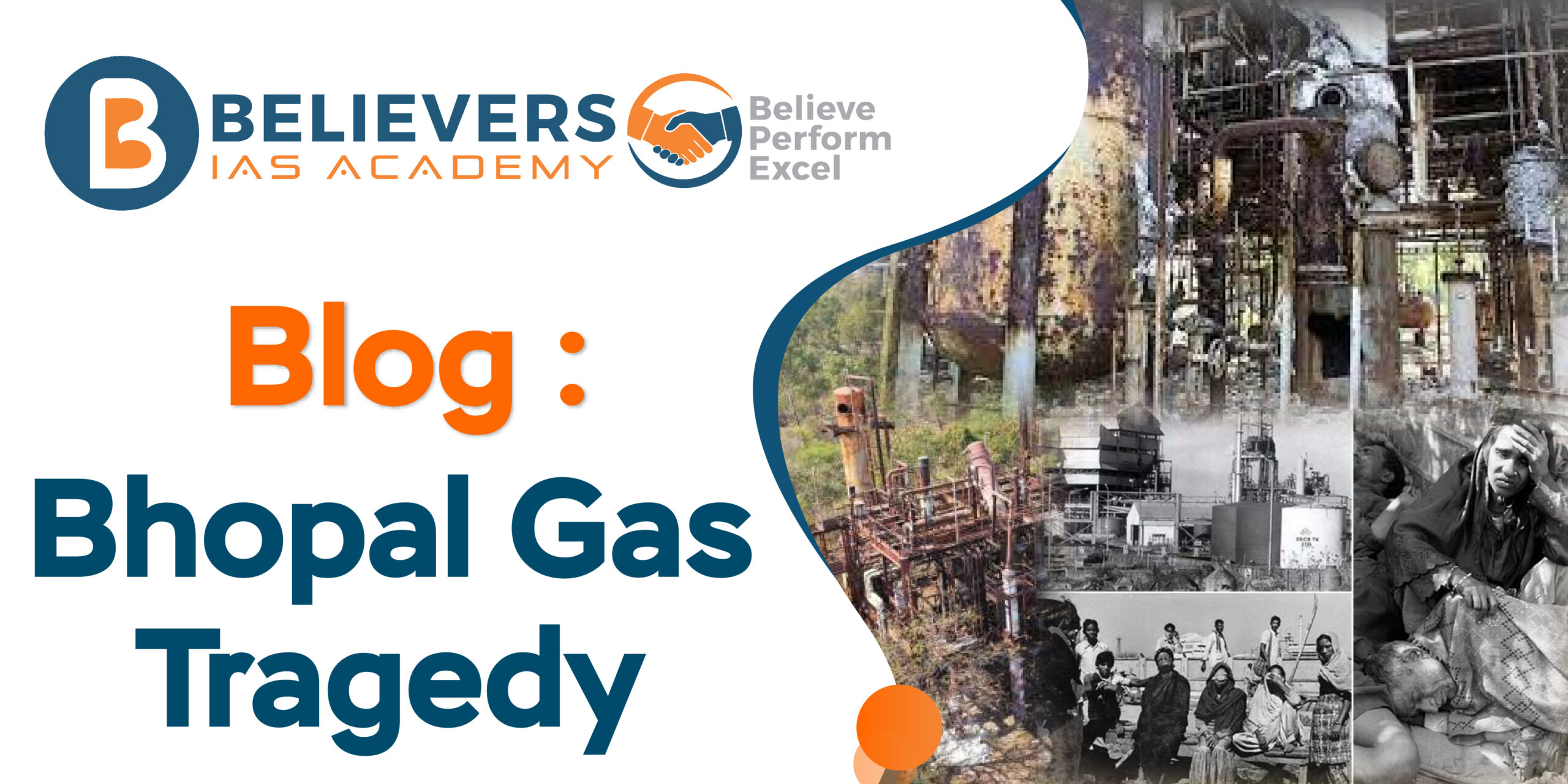Bhopal Gas tragedy
The Bhopal Gas Tragedy, commonly referred to as the Bhopal tragedy, was one of the worst industrial accidents in history that took place in the Indian city of Bhopal on the night of December 2–3, 1984.Methyl isocyanate (MIC) gas leaked from a pesticide facility owned and run by Union Carbide India Limited (UCIL), a division of the American multinational corporation Union Carbide Corporation (UCC), which caused the catastrophe. The gas leak led to the emission of poisonous gases into the atmosphere, including MIC, hydrogen cyanide, and other deadly compounds. These pollutants swiftly spread across the nearby residential regions.
What is the background behind Bhopal tragedy?
- The Plant Was Established: In the early 1970s, the American multinational corporation Union Carbide Corporation (UCC) and its affiliate Union Carbide India Limited (UCIL) built a pesticide production facility in Bhopal. Methyl isocyanate (MIC), a very hazardous and reactive chemical, was used in the construction of the factory to make a variety of agricultural chemicals, including the insecticide carbaryl.
- Safety Issues: There have been issues with the Bhopal plant’s safety regulations almost from the beginning. The plant was situated in a heavily populated region of Bhopal, and there were inadequate safety precautions. The safety devices, such as the refrigeration systems designed to ensure the stability of the MIC gas, were frequently broken or poorly maintained.
- Labour and Management Issues:The plant has dealt with management problems, worker undertraining, and labour issues. There have been allegations of inappropriate handling of dangerous chemicals and a lack of worker understanding of safety procedures.
- The tragic night:A water intrusion into one of the storage tanks carrying MIC on the evening of December 2, 1984, caused a runaway reaction that resulted in a significant rise in pressure and temperature. The hazardous gas was released into the atmosphere despite the safety systems’ failure to stop it.
- Gas Leak and Immediate Effect: The Bhopal area was exposed to over 40 metric tonnes of hazardous gases, including MIC and other deadly chemicals. The fumes engulfed the adjacent neighborhoods and slums, resulting to sudden death and injuries.
What were the reasons behind the tragedy?
- Failure of the safety systems: The Bhopal plant’s safety measures, notably those involved in the handling and storage of the highly toxic MIC, were ineffective. There were numerous broken or inoperable valves, lines, vent gas scrubbers, and the steam boiler used to clean the pipelines.
- Overfilled Tank: The tank (E610) that eventually leaked the MIC had more liquid in it than was safe to store. When it was only supposed to hold 30 tons of MIC, it was holding 42 tons, which was against safety regulations.
- Exothermic Reaction: While workers were attempting to unblock the side pipe, water entered it and entered the tank. This led to an exothermic reaction that raised the tank’s pressure and resulted in the hazardous gas being vented at atmospheric pressure.
- Inadequate Safety Measures: Three safety measures that may have prevented or reduced the tragedy were present at the factory, but they were either broken or too small to withstand the magnitude of the catastrophe. The MIC tank was supposed to be kept cool, but the refrigeration equipment was malfunctioning, the flare tower was useless, and the gas scrubber, which could have neutralized the gas, had been switched off at the time of the leak.
- Delay in Action: The public and authorities were not informed of the gas leak for a considerable amount of time. Before any warning was given, the effects of the gas were already being felt by the employees inside the factory.
- Lack of Awareness: The people only learned about the gas leak when they were exposed to it directly or when they ventured out into the open to observe what was happening. The repercussions of the disaster would have been lessened if there had been a prompt warning to seek safety.
What are the impacts on various sections of the society?
- Impact on the Population:
-
-
- Water reached the MIC tank on the night of December 2–3, 1984, setting off an exothermic reaction that increased pressure and allowed poisonous gases to leak into the atmosphere.
- People who were exposed to the gas leak experienced acute impacts such as coughing, suffocation, severe eye irritation, dyspnea, and stomach ache.
- By daybreak, pulmonary edema, reflexogenic circulatory collapse, and choking had killed thousands of people.
- Autopsies found damage to the brain, kidneys, liver, and other organs in addition to the lungs.
-
- Effect on the Environment:
-
-
- The local flora and fauna were significantly impacted, as evidenced by the discovery of several animal carcasses and the rapid wilting of trees.
- Fishing was forbidden because of concerns about contamination, which made food scarce in the area.
-
- Effects on Children’s Health :
-
- Neonatal mortality shot up by 200%, while the stillbirth rate climbed by 300%.
- Around 200,000 youngsters were exposed to the gas, and because of their shorter stature, they were particularly vulnerable.
What were the legal remedies taken for the victims of this tragedy?
- Response and legal actions:
-
-
- The Bhopal Gas Leak Disaster Act, passed by the Indian government in March 1985, gave it the authority to represent all victims in court.
- The US federal court received lawsuits against UCC, and an out-of-court settlement for $470 million in damages was achieved in 1989.
- The Indian government had requested $3.3 billion, and the settlement was roundly criticized as being insufficient.
-
- Legal Consequences:
-
- Warren Anderson, the CEO of UCC at the time of the disaster, was accused of manslaughter in India in 1991.
- After he failed to show up for court in 1992, the Bhopal court designated him to be a wanted felon.
- The US refused to extradite Anderson, and he passed away in 2014 without being brought to justice.



